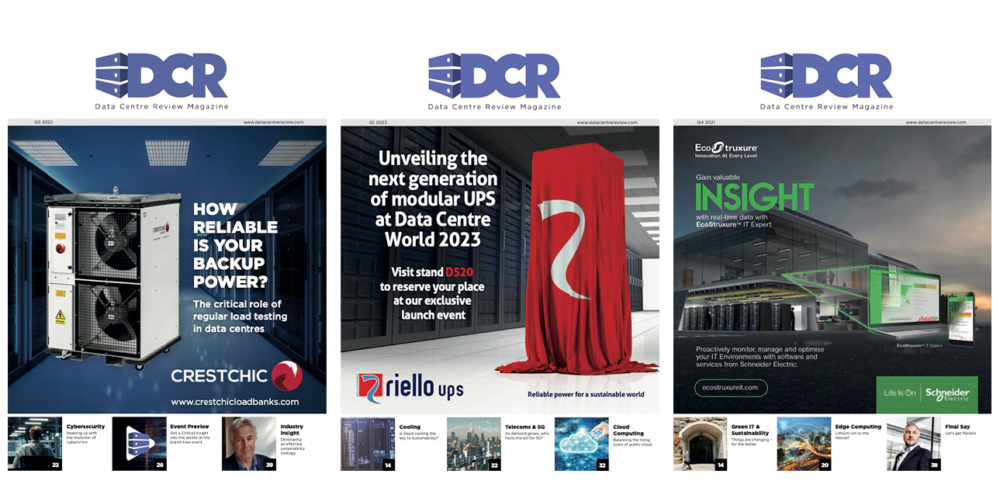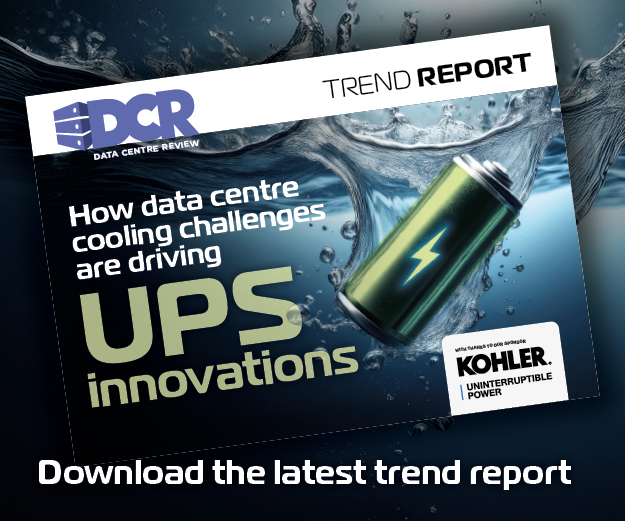Simon Prichard, EMEA ITC Business Leader at Mitsubishi Electric, makes the case for heat recovery strategies – simultaneous heat/cool chillers, water-source heat pumps and district networks – that slash emissions and supply hot water.
Data centres are the backbone of modern communication and the flow of information, and they power every aspect of our digital lives. The growing use of technology like AI is pushing the demand for the computing power, storage and infrastructure that data centres offer higher. In fact, the Government now recognises that data centres are a critical part of the long term plan to lead in AI.
However, the transmission of large amounts of data also requires a lot of energy, and data centres are responsible for 1% of global greenhouse gas emissions as a result. This means we must find ways of reducing how much energy these buildings use and strike a balance between the UK’s ambitions for digital transformation and current targets for net zero.
One way this can be achieved is through heat recovery, which means using the otherwise wasted heat from data centres to heat nearby buildings. A number of countries are already putting this into practice using technologies such as heat pumps and heat networks – and if rolled out in the UK, it could allow data centres to play a critical role in the UK’s transition towards low carbon heat.
Progress is already being made
Several countries are already introducing legislation designed to reduce the energy consumption of data centres. For example, the European Union’s Energy Efficiency Directive requires owners with data centres of a minimum capacity of 500kW operating within the EU to disclose the energy performance of their buildings. The regulation also plans to introduce minimum sustainability performance standards for data centres later this year.
Germany has also established specific requirements for data centres operating in the country within its Energy Efficiency Act. This means operational data centres must achieve a power usage effectiveness (PUE) of 1.5 or lower by 2027, and 1.3 or lower by 2030. The re-use of waste heat is also a requirement for business operations with an average annual energy consumption of more than 2.5GWh, with data centres having to achieve 10% heat re-use by 2028.
Closer to home, the UK’s Building Regulations require the owners and managers of commercial buildings – including data centres – to reduce the carbon emissions of these buildings by 27%. The Government has also introduced plans to create ‘AI Growth Zones’, which will include the establishment of an AI Energy Council to address the increased energy demands of these buildings.
So how can we build on this progress, and further reduce the impact data centres have on the environment?
Heat recovery can play a role
There has been a great deal of focus on selecting the right cooling technologies to reduce energy consumption, heat recovery can also help.
In simple terms, heat recovering involves using the otherwise wasted heat from data centres to heat nearby buildings using technologies such as heat pumps. The heat output of data centres is typically 30°C-35°C, and heat pumps use water at this temperature as a heat source and increase the temperature to 70°C or 80°C. While the heat output depends on whether the network is 3G or 4G, this heat energy can then be used to heat nearby homes, or to supply domestic hot water to commercial buildings such as shops or hotels to meet fluctuating demand.
Heat networks can also be used to distribute waste heat from data centres to homes in nearby towns and cities. These work by distributing heat and hot water from a central source to surrounding buildings via a large network of pipes, improving energy efficiency while supporting the transition to more renewable home heating.
It’s also important to consider the output, size and location of a data centre when choosing the best method for heat recovery, as this can affect the type of approach taken. For example, simultaneous heating and cooling chillers can be useful for data centres with coincidental heating and cooling loads. It is also possible to use a dedicated water source heat pump that uses condenser water or return chiller water from a data centre’s cooling system as its energy source.
Putting this into practice
A number of countries are already adopting heat recovery to reduce the energy consumption of data centres. For example, Tallaght in the Republic of Ireland is home to the country’s first low carbon district heating network. The scheme uses ejected heat from a data centre to power heating demand for nearby homes, and peak requests in winter are satisfied by dedicated heat pumps and a heat pump module. The network is estimated to reduce pollutant emissions in the South Dublin County region by nearly 1,500 tonnes per year.
Fortum, a Finnish energy company, is also putting this into practice. The company’s district heating scheme uses a heat pump to capture waste heat from a data centre to supply its heat network – and also provide cooling for the data centre. The data centre currently delivers 2,200 GWh of heat annually and serves 7,000 customers across its network.
The UK’s data centre market is booming, driven by rising demand for computing power and the continued adoption of AI. Technology is vital to power the UK’s digital economy, but we must also find ways to reduce the amount of energy these buildings consume. Heat recovery can build on the progress that has already been made, while also supporting the transition to renewable heating in our homes and businesses. This will allow us to reduce the impact of data centres on the environment and ultimately reach net zero sooner.



